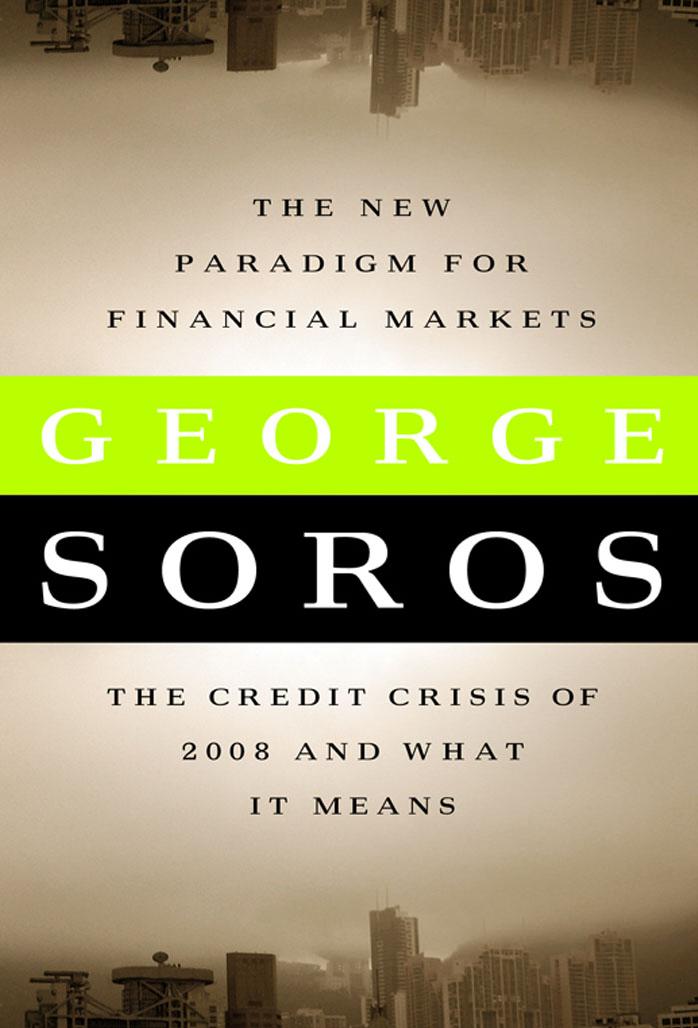The New Paradigm for Financial Markets by George Soros

Author:George Soros
Language: eng
Format: mobi, epub, pdf
Publisher: PublicAffairs
Published: 2008-02-09T21:00:00+00:00
MARKETS VERSUS REGULATORS
Because financial markets do not tend towards equilibrium they cannot be left to their own devices. Periodic crises bring forth regulatory reforms. That is how central banking and the regulation of financial markets have evolved. While boom-bust sequences occur only intermittently, the reflexive interplay between financial markets and the financial authorities is an ongoing process. The important thing to realize is that both market participants and financial authorities act on the basis of imperfect understanding; that is what makes the interaction between them reflexive.
Misunderstandings by either side usually stay within reasonable bounds because market prices provide useful information which allows both sides to recognize and correct their mistakes, but occasionally mistakes prove to be self-validating, setting in motion vicious or virtuous circles. Such circles resemble boom-bust processes in the sense that they are initially self-reinforcing but eventually self-defeating. Vicious and virtuous circles are few and far between, while reflexive interactions go on all the time. Reflexivity is a universal condition, while bubbles constitute a special case.
The distinguishing feature of reflexive processes is that they contain an element of uncertainty or indeterminacy. That uncertainty ensures that the behavior of financial markets is not determined by universally valid generalizations but follows a unique, irreversible path. Within that one-directional process we may distinguish between humdrum, everyday events, which are repetitive and lend themselves pretty well to statistical generalizations, and unique, historical events whose outcome is genuinely uncertain. Bubbles and other vicious or virtuous circles belong to the latter category. It should be realized, however, that reflexive, circular relationships do not necessarily generate historically significant processes. Those which are self-defeating to start with disappear without trace. Others are aborted along the way. Relatively few reach far-from-equilibrium territory. Moreover no process takes place in total isolation. Usually there are several reflexive processes going on at the same time, interfering with each other and producing irregular shapes. Regular patterns arise only on those rare occasions when a particular process is so powerful that it overshadows all the others. Perhaps I did not make this point sufficiently clear in The Alchemy of Finance.
THE FLAW IN EQUILIBRIUM THEORY
Equilibrium theory is not without merit. It provides a model with which reality can be compared. When I speak of far-from-equilibrium conditions I am also using the concept of equilibrium.* And economists have made many valiant attempts to adjust their models to take account of reality. So-called second-generation business cycle models have sought to analyze boom-bust situations. I cannot judge their validity,
*This could be easily misunderstood. Indeed it was misunderstood by one of my correspondents; hence this footnote. When I speak of far-from-equilibrium conditions, I am using "equilibrium" as a figure of speech. I do not mean to imply that there is a stable equilibrium from which a boom-bust process occasionally deviates. I think of equilibrium as a moving target because market prices can affect the fundamentals they are supposed to reflect.
Download
The New Paradigm for Financial Markets by George Soros.epub
The New Paradigm for Financial Markets by George Soros.pdf
This site does not store any files on its server. We only index and link to content provided by other sites. Please contact the content providers to delete copyright contents if any and email us, we'll remove relevant links or contents immediately.
International Integration of the Brazilian Economy by Elias C. Grivoyannis(90982)
The Radium Girls by Kate Moore(11921)
Turbulence by E. J. Noyes(7936)
Nudge - Improving Decisions about Health, Wealth, and Happiness by Thaler Sunstein(7615)
The Black Swan by Nassim Nicholas Taleb(7010)
Rich Dad Poor Dad by Robert T. Kiyosaki(6401)
Pioneering Portfolio Management by David F. Swensen(6226)
Man-made Catastrophes and Risk Information Concealment by Dmitry Chernov & Didier Sornette(5921)
Zero to One by Peter Thiel(5686)
Secrecy World by Jake Bernstein(4644)
Millionaire: The Philanderer, Gambler, and Duelist Who Invented Modern Finance by Janet Gleeson(4375)
The Age of Surveillance Capitalism by Shoshana Zuboff(4209)
Skin in the Game by Nassim Nicholas Taleb(4162)
Bullshit Jobs by David Graeber(4094)
The Money Culture by Michael Lewis(4076)
Skin in the Game: Hidden Asymmetries in Daily Life by Nassim Nicholas Taleb(3929)
The Dhandho Investor by Mohnish Pabrai(3699)
The Wisdom of Finance by Mihir Desai(3653)
Blockchain Basics by Daniel Drescher(3507)
